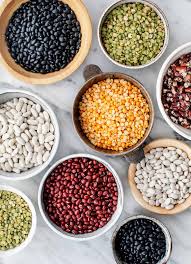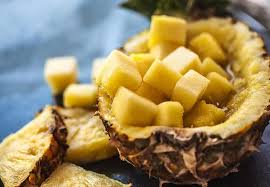Bean Bonanza: Exploring the Versatility of Legumes

The Versatile Bean: A Culinary Delight
Beans are a staple food that have been consumed by humans for centuries. They are not only nutritious but also incredibly versatile, making them a popular ingredient in cuisines around the world.
Beans come in various shapes, sizes, and colors, with each type offering its own unique flavor and texture. From creamy cannellini beans to hearty black beans and nutty chickpeas, there is a bean to suit every palate.
One of the key benefits of beans is their high nutritional value. They are an excellent source of protein, fiber, vitamins, and minerals, making them a healthy addition to any diet. Beans are also low in fat and cholesterol, making them a heart-healthy food choice.
Beans can be prepared in a multitude of ways – they can be boiled, mashed, fried, roasted, or even sprouted. They can be used in soups, stews, salads, dips, spreads, and more. The possibilities are endless when it comes to cooking with beans.
Whether you enjoy classic dishes like chili con carne or hummus or prefer experimenting with new recipes that feature beans as the star ingredient, there is no denying the culinary versatility of this humble legume.
So next time you’re planning your meals, consider incorporating beans into your dishes for a nutritious and delicious twist that will satisfy your taste buds and nourish your body.
7 Essential Tips for Cooking and Enjoying Beans to the Fullest
- Soak dried beans overnight before cooking to reduce cooking time and improve digestibility.
- Rinse canned beans before using to remove excess sodium and starch.
- Add a piece of kombu seaweed while cooking beans to enhance flavor and aid in digestion.
- Experiment with different bean varieties like black beans, chickpeas, and kidney beans for variety in dishes.
- Use cooked beans in salads, soups, stews, and dips for added protein and fiber.
- Store cooked beans in an airtight container in the refrigerator for up to 3-4 days or freeze them for longer storage.
- Try making homemade bean burgers or veggie patties using mashed beans as a base.
Soak dried beans overnight before cooking to reduce cooking time and improve digestibility.
For optimal cooking results and improved digestibility, it is recommended to soak dried beans overnight before cooking. This simple step helps to soften the beans, reducing their cooking time significantly. Additionally, soaking beans can help break down complex sugars that can cause digestive discomfort, making them easier on the stomach. By taking the time to soak dried beans before cooking, you can enhance both the texture and nutritional benefits of this versatile ingredient.
Rinse canned beans before using to remove excess sodium and starch.
Rinsing canned beans before using them is a simple yet effective tip to reduce excess sodium and starch content. By giving the beans a quick rinse under running water, you can significantly lower their sodium levels and remove any starchy residue that may affect the texture of your dish. This extra step not only enhances the flavor of the beans but also makes them a healthier choice for your meals.
Add a piece of kombu seaweed while cooking beans to enhance flavor and aid in digestion.
Adding a piece of kombu seaweed while cooking beans is a clever tip that not only enhances the flavor of the beans but also aids in digestion. Kombu seaweed contains enzymes that help break down the complex sugars in beans, making them easier to digest and reducing the likelihood of digestive discomfort. Additionally, kombu imparts a subtle umami flavor to the beans, adding depth and richness to your dishes. Try this simple trick next time you cook beans for a flavorful and gut-friendly meal.
Experiment with different bean varieties like black beans, chickpeas, and kidney beans for variety in dishes.
For a delightful culinary experience, consider experimenting with various bean varieties such as black beans, chickpeas, and kidney beans to add a diverse range of flavors and textures to your dishes. Each type of bean brings its own unique taste and nutritional benefits, allowing you to create exciting and flavorful meals that cater to different preferences and dietary needs. So go ahead and explore the world of beans to elevate your cooking with a touch of variety and creativity!
Use cooked beans in salads, soups, stews, and dips for added protein and fiber.
Incorporating cooked beans into your salads, soups, stews, and dips is a simple yet effective way to boost the protein and fiber content of your meals. Beans not only add a hearty texture to dishes but also provide essential nutrients that contribute to a balanced diet. Whether you’re looking to increase your protein intake or enhance the nutritional value of your favorite recipes, adding cooked beans is a versatile and delicious solution that can benefit both your taste buds and your overall well-being.
Store cooked beans in an airtight container in the refrigerator for up to 3-4 days or freeze them for longer storage.
For optimal freshness and longevity, it is recommended to store cooked beans in an airtight container in the refrigerator for up to 3-4 days. If you wish to extend their shelf life further, freezing cooked beans is a great option for longer storage. By properly storing your cooked beans, you can ensure that they remain flavorful and ready to use in various dishes whenever you need them.
Try making homemade bean burgers or veggie patties using mashed beans as a base.
For a delicious and nutritious twist on traditional burgers, consider trying your hand at making homemade bean burgers or veggie patties using mashed beans as a base. By mashing beans and combining them with flavorful seasonings and ingredients like onions, garlic, herbs, and spices, you can create a tasty and satisfying alternative to meat-based burgers. These bean-based patties are not only packed with protein and fiber but also offer a unique texture and flavor that will surely impress your taste buds. Give homemade bean burgers a try for a wholesome and plant-based meal option that is sure to delight both vegetarians and meat-eaters alike.
